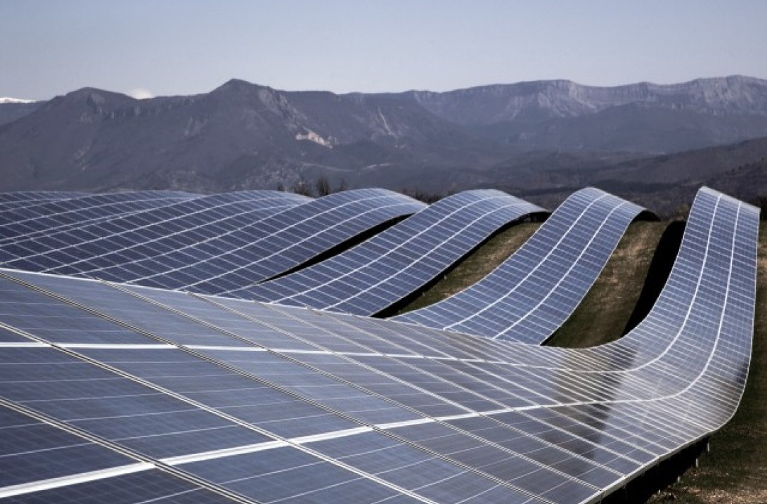Prices for solar, wind, and battery storage are dropping so rapidly that renewables are increasingly squeezing out all forms of fossil fuel power, including natural gas.
The cost of new solar plants dropped 20 percent over the past 12 months, while onshore wind prices dropped 12 percent, according to the latest Bloomberg New Energy Finance (BNEF) report. Since 2010, the prices for lithium-ion batteries — crucial to energy storage — have plummeted a stunning 79 percent (see chart).

“The economic case for building new coal and gas capacity is crumbling,” as BNEF’s chief of energy economics, Elena Giannakopoulou, told Bloomberg.
At the same time, solar and wind plants — which are increasingly being built with battery storage — are eating into the utilization of existing coal and gas plants, making them far less profitable. For instance, the super-efficient combined-cycle gas turbine (CCGT) plants that have been popular in recent decades, were designed to be used at full power between 60 percent and 90 percent of the time.
But their actual utilization rate (also called the “capacity factor”) has been plummeting in recent years, and is now close to a mere 20 percent in countries as diverse as China, Germany, and India (see chart).
SOLAR AND WIND ARE SQUEEZING OUT COAL AND GAS WORLDWIDE.
Arizona regulators “recently refused to endorse plans by three power companies that included more natural-gas facilities,” the New York Times reported Wednesday. “Commissioners directed them to make greater use of energy storage and plants that produce zero emissions.”
In California, the world’s sixth-biggest economy now mandates that half its power in 2030 be renewable. With solar and wind prices plummeting, NRG Energy recently said it would shutter three gas-fired plants.
And things are only going to get tougher for gas and coal compared to renewables. BNEF’s projection of current and future prices for this country shows that onshore wind (left chart) is already cheaper than coal, and is becoming cheaper than gas. Solar photovoltaics (right chart) is rapidly becoming cheaper than coal and will beat gas within several years.
RENEWABLES DON’T JUST OUT-COMPETE COAL IN AMERICA. WIND POWER AND, INCREASINGLY, SOLAR PHOTOVOLTAICS (PV), CAN BEAT A NATURAL GAS COMBINED-CYCLE GAS TURBINE (CCGT).
Globally, coal, and especially gas, are in even tougher shape. That’s because most places in the world don’t have cheap natural gas from fracking like the United States does.
Also, the biggest new power markets are in developing countries, which don’t have as expansive of an electric grid, again making distributed renewables relatively more attractive. But those countries often have a lot of relatively inexpensive undeveloped land in very sunny places.
According to BNEF’s projection of current and future prices for coal and gas versus wind and solar in China, onshore wind (left chart) is already cheaper than gas and is quickly becoming cheaper than coal. Solar (right chart) is rapidly becoming cheaper than gas and will beat coal within several years.
WITHIN A FEW YEARS, ONSHORE WIND AND SOLAR WILL EACH BEAT BOTH COAL AND GAS IN CHINA.
In the Middle East, the economics of solar power and batteries are so good that SoftBank Group is partnering with Saudi Arabia to build a stunning 200 gigawatts of solar power capacity for $200 billion. This is 100 times larger than the largest solar farm ever proposed.
Softbank said this week that the system will supply “evening hour” power to the Saudis thanks to what will be “the largest utility-scale battery” in two to three years, Bloomberg reported.
The future could not be sunnier for renewables.
Teaser photo credit: ACERA.








